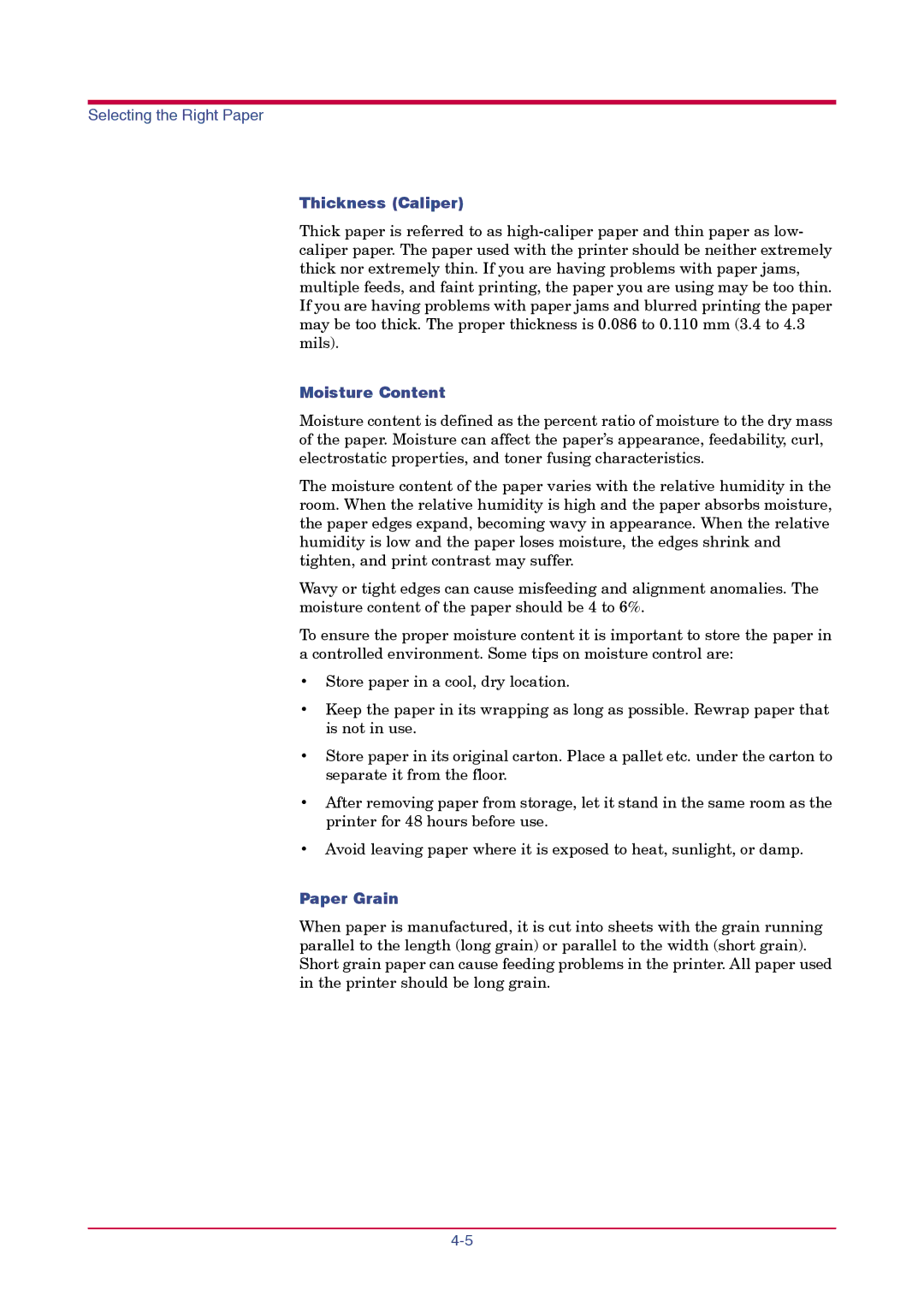
Selecting the Right Paper
Thickness (Caliper)
Thick paper is referred to as
Moisture Content
Moisture content is defined as the percent ratio of moisture to the dry mass of the paper. Moisture can affect the paper’s appearance, feedability, curl, electrostatic properties, and toner fusing characteristics.
The moisture content of the paper varies with the relative humidity in the room. When the relative humidity is high and the paper absorbs moisture, the paper edges expand, becoming wavy in appearance. When the relative humidity is low and the paper loses moisture, the edges shrink and tighten, and print contrast may suffer.
Wavy or tight edges can cause misfeeding and alignment anomalies. The moisture content of the paper should be 4 to 6%.
To ensure the proper moisture content it is important to store the paper in a controlled environment. Some tips on moisture control are:
•Store paper in a cool, dry location.
•Keep the paper in its wrapping as long as possible. Rewrap paper that is not in use.
•Store paper in its original carton. Place a pallet etc. under the carton to separate it from the floor.
•After removing paper from storage, let it stand in the same room as the printer for 48 hours before use.
•Avoid leaving paper where it is exposed to heat, sunlight, or damp.
Paper Grain
When paper is manufactured, it is cut into sheets with the grain running parallel to the length (long grain) or parallel to the width (short grain). Short grain paper can cause feeding problems in the printer. All paper used in the printer should be long grain.
